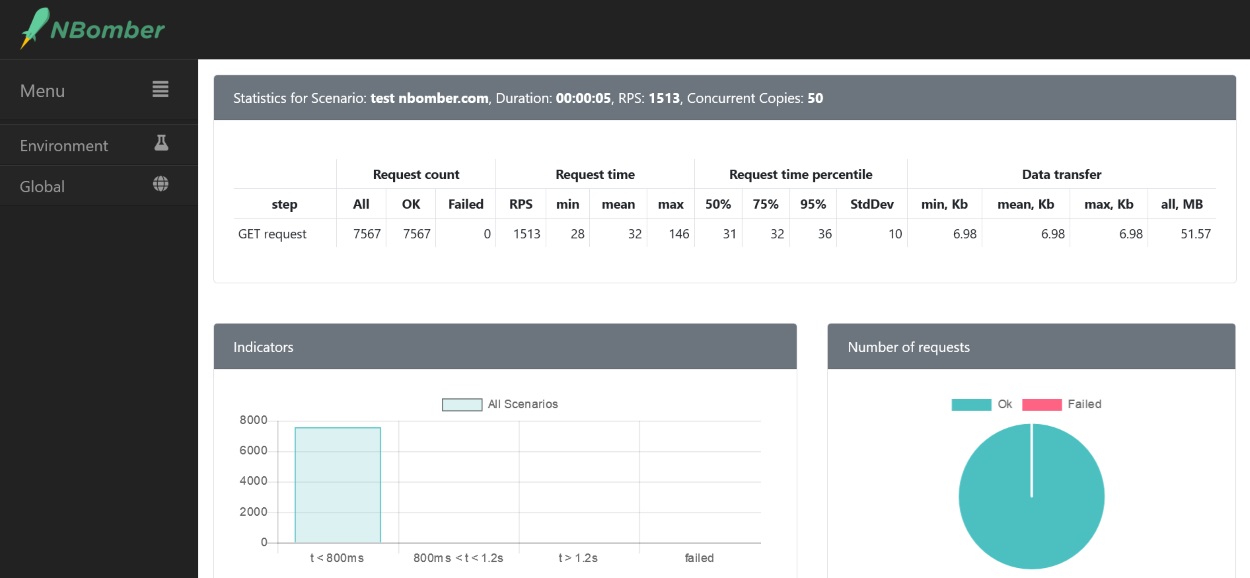Very simple load testing framework for Pull and Push scenarios. It's 100% written in F# and targeting .NET Core and full .NET Framework.
We appreciate every little donation. If everyone we've ever helped gave back just small donation a month, we'd be able to bring you NBomber for years and years to come. If you or your company are using NBomber and willing to help keep the project sustainable, please donate via Patreon.
To install NBomber via NuGet, run this command in NuGet package manager console:
PM> Install-Package NBomber
Documentation is located here.
- The main reason behind NBomber is to provide a lightweight framework for writing load tests which you can use to test literally any system and simulate any production workload. We wanted to provide only a few abstractions so that we could describe any type of load and still have a simple, intuitive API.
- Another goal is to provide building blocks to validate your POC (proof of concept) projects by applying any complex load distribution.
- With NBomber you can test any PULL or PUSH system (HTTP, WebSockets, GraphQl, gRPC, SQL Database, MongoDb, Redis etc).
NBomber as a modern framework provides:
- Zero dependencies on protocol (HTTP/WebSockets/AMQP/SQL)
- Zero dependencies on semantic model (Pull/Push)
- Very flexible configuration and dead simple API
- Cluster support
- Reporting sinks
- CI/CD integration
- Plugins/extensions support
- Data feed support
NBomber is a foundation of building blocks which you can use to describe your test scenario, run it and get reports.
// FSharp example
let step = Step.create("step", fun context -> task {
// you can do any logic here: go to http, websocket etc
do! Task.Delay(seconds 1)
return Response.Ok()
})
Scenario.create "scenario" [step]
|> NBomberRunner.registerScenario
|> NBomberRunner.run// CSharp example
var step = Step.Create("step", async context =>
{
// you can do any logic here: go to http, websocket etc
await Task.Delay(TimeSpan.FromSeconds(1));
return Response.Ok();
});
var scenario = ScenarioBuilder.CreateScenario("scenario", step);
NBomberRunner
.RegisterScenarios(scenario)
.Run();| Language | Example |
|---|---|
| F# | link |
| C# | link |
Would you like to help make NBomber even better? We keep a list of issues that are approachable for newcomers under the good-first-issue label.




